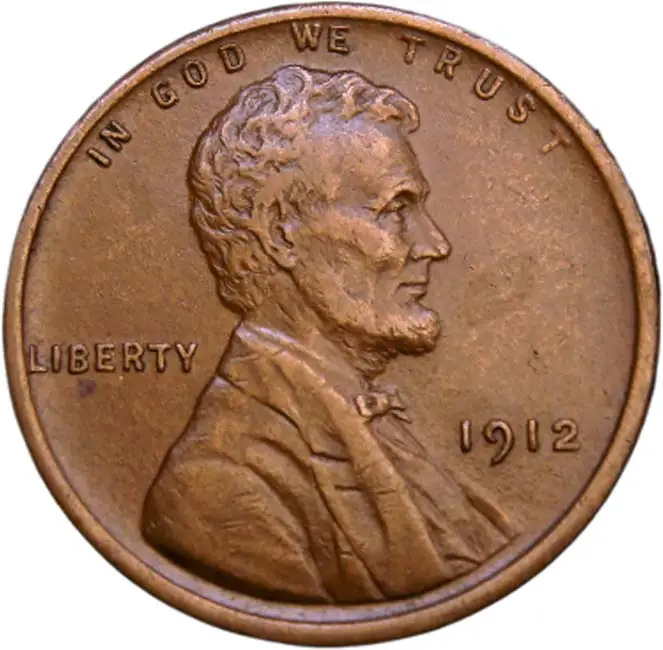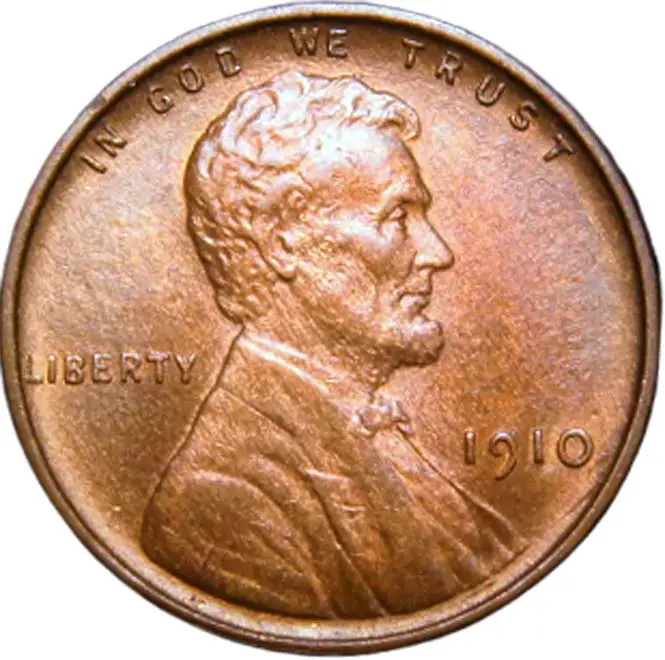- Home
- Lincoln Cents
- 1912
1912 Lincoln Wheat Penny Value | How Much Is This Cent Worth Today?

The 1912 Lincoln Wheat Penny is a significant coin in American numismatics. Its unique design and historical context make it a favorite among collectors.
Understanding its features, value factors, and care tips can help you appreciate this classic coin even more.
Key Takeaways
-
The 1912 Lincoln Wheat Penny features a distinct design with Lincoln's portrait on the front and wheat stalks on the back.
-
The coin's value is influenced by how rare it is, its condition, and how much collectors want it.
-
Grading a coin helps determine its value, with specific terms used to describe its condition.
-
You can buy or sell a 1912 Lincoln Wheat Penny through trusted coin dealers, auctions, or online platforms.
-
Taking good care of your penny involves proper storage, avoiding cleaning, and using the right methods to preserve it over time.
Design Features of the 1912 Lincoln Wheat Penny
Obverse Design Elements
The front side of the 1912 Lincoln Wheat Penny, known as the obverse, features a portrait of President Abraham Lincoln.
This design is iconic and represents a significant part of American history. The inscription "In God We Trust" is also present, along with the year of minting, 1912.
The details in Lincoln's face and the surrounding elements are crafted with care, making it a favorite among collectors.
Reverse Design Elements
On the back side, or reverse, of the coin, you will find two wheat stalks framing the words "One Cent" and "United States of America."
This design symbolizes prosperity and agriculture, which were important themes during the early 20th century. The overall look of the reverse is simple yet elegant, contributing to the coin's charm.
Mint Marks and Their Locations
Mint marks are small letters that indicate where the coin was made. For the 1912 Lincoln Wheat Penny, the mint marks can be found on the reverse side, just below the wheat stalks. Here’s a quick overview of the mint marks:
No mint mark means it was produced in Philadelphia, S means San Francisco and D means Denver.
Knowing the mint mark is essential because it can affect the value of the coin. Coins from certain mints are rarer and can be worth more.
Understanding these design features helps me appreciate the 1912 Lincoln Wheat Penny even more. Each detail tells a story about its time and place in history.
Overall, the design elements of the 1912 Lincoln Wheat Penny are not just about looks; they reflect the values and history of the era.
This coin has a total mass of 3.11 g, a diameter of 19.05 mm, and a thickness of 1.55 mm. Its edge is smooth, and the coins are composed of 95% copper, making it a significant piece for any collection.
Mint Dates and Values:
| Date | VF-20 | EF-40 | MS-60 |
|---|---|---|---|
| 1912 | $5.50 | $15 | $35 |
| 1912 (D) | $35 | $85 | $175 |
| 1912 (S) | $45 | $80 | $185 |
(S) minted in San Francisco. (D) minted in Denver.
Valuation Source: The Official Red Book 77th Edition 2024
Factors Influencing the Value of the 1912 Lincoln Wheat Penny
When it comes to understanding the value of the 1912 Lincoln Wheat Penny, several key factors play a role.
Rarity and mintage numbers are crucial; the fewer coins that were made, the more valuable they can become.
For instance, if a specific mint produced only a small number of these pennies, collectors will often pay a premium for them.
Rarity and Mintage Numbers
-
The total number of Wheat cents minted in 1912 was significant, but certain variations are much rarer.
-
Key dates and rare minting errors can significantly increase a wheat penny value, with some coins fetching high premiums.
-
Always check the mintage figures to see how many were produced.
Condition and Grading
The condition of the penny is another important factor. Coins are graded on a scale, and the better the condition, the higher the value. Here are some common grading terms:
-
Uncirculated: No signs of wear.
-
Extremely Fine: Slight wear on high points.
-
Good: Heavy wear but identifiable.
Preservation and Care for Your 1912 Lincoln Wheat Penny
Taking care of my 1912 Lincoln Wheat Penny is really important to keep its value intact. Proper storage is key to preventing damage. Here are some tips I follow:
Proper Storage Techniques
-
Use a coin holder or album to protect it from scratches.
-
Keep it in a cool, dry place away from sunlight.
-
Avoid touching the coin with bare hands; use gloves if possible.
Cleaning and Maintenance Tips
-
Never clean the coin with harsh chemicals or abrasive materials.
-
If it needs cleaning, gently rinse it with distilled water.
-
Store it in a protective case to avoid dust and dirt accumulation.
Long-term Preservation Strategies
-
Consider using acid-free materials for storage.
-
Regularly check the condition of the coin to catch any issues early.
-
Keep it away from moisture to prevent corrosion.
By following these simple steps, I can help ensure that my 1912 Lincoln Wheat Penny remains in great condition for years to come. Remember, wheat pennies worth money can be easily damaged if not cared for properly!
Conclusion
In summary, the 1912 Lincoln Wheat Penny is more than just a coin; it's a piece of history that many collectors cherish.
Understanding its value involves looking at its condition, rarity, and demand among collectors. Whether you have one in your pocket or are thinking about starting a collection, knowing what makes this penny special can help you appreciate it more.
As you explore the world of coin collecting, remember that each coin tells a story, and the 1912 Lincoln Wheat Penny is a great place to start.
Frequently Asked Questions
What is the value of a 1912 Lincoln Wheat Penny?
What is the value of a 1912 Lincoln Wheat Penny?
The value of a 1912 Lincoln Wheat Penny can vary based on its condition and rarity. Generally, it can be worth anywhere from $1.75 to $50.
How can I tell if my 1912 Lincoln Wheat Penny is rare?
How can I tell if my 1912 Lincoln Wheat Penny is rare?
You can check the mintage numbers and look for mint marks. If your penny has a low mintage or a unique mint mark, it may be considered rare.
What does it mean to grade a coin?
What does it mean to grade a coin?
Grading a coin means assessing its condition. Coins are graded on a scale, and a higher grade usually means a higher value.
Where is the best place to sell my 1912 Lincoln Wheat Penny?
Where is the best place to sell my 1912 Lincoln Wheat Penny?
You can sell your penny at coin shops, online marketplaces, or auctions. Make sure to choose a reputable place.
Should I clean my 1912 Lincoln Wheat Penny?
Should I clean my 1912 Lincoln Wheat Penny?
It's best not to clean your penny because cleaning can damage it. Instead, focus on proper storage to keep it safe.
How can I store my 1912 Lincoln Wheat Penny to keep it in good shape?
How can I store my 1912 Lincoln Wheat Penny to keep it in good shape?
Store your penny in a cool, dry place. Use coin holders or albums designed for coins to protect it from scratches and dirt.
More Lincoln Wheat Cents 1909 - 1958
1909, 1910, 1911, 1912, 1913, 1914, 1915, 1916, 1917, 1918, 1919, 1920, 1921, 1922, 1923, 1924, 1925, 1926, 1927, 1928, 1929, 1930, 1931, 1932, 1933, 1934, 1935, 1936, 1937, 1938, 1939, 1940, 1941, 1942, 1943, 1944, 1945, 1946, 1947, 1948, 1949, 1950, 1951, 1952, 1953, 1954, 1955, 1956, 1957, 1958.
Learn more about coin collecting by returning to Lost Treasure HQ.




